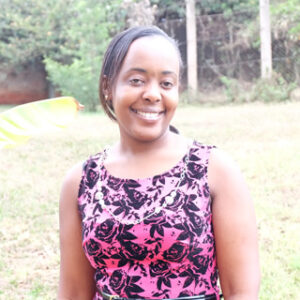- by AATF Africa
Richard Amolo takes this writer around his farm. He just ploughed it in readiness for the short rains that were expected the previous week.
Yes, the rains delayed. Amolo says he is afraid they may fail altogether. But there’s one thing that no longer gives him sleepless nights -the Striga weed, known locally as Kayongo. He’s among dozens of farmers in Got Bondo village, in Central Asembo, Siaya, in Western Kenya, battling the destructive purple-coloured weed that attacks cereals, including maize, sorghum and millet.
“I have witnessed the fruits of the battle; now I can eat and sell the surplus. Previously I barely managed to feed my family. I plan to extend the cropland. I want to get into agri-business.”
Rains delay in this area. But they never fail. “As long as I can remember, we have blamed rains for all our farming problems. Even when we had enough rainfall we still received minimal maize harvest. Rain has been the classic scape-goat,” Richard recalls.
However, the biggest torment for millions of farmers in the Lake Victoria region has been the prolific Striga weed which can destroy 80 per cent of the crop.
According to experts, this poisonous weed survives by siphoning off water and nutrients from the host crops for its own growth. It thus leaves the host stunted.
“A plant attacked by Kayongo looks like an emaciated HIV/Aids patient,” Amolo says, in his native Luo language.
He used to harvest just one bag of 90 kilos on one of his parcels of land outside the well-kempt homestead. He harvests four bags (360 kilos) nowadays, since he decided to try the Imazapyr Resistant (IR) seeds – the latest technology in the war against the weed.
According to Gospel Omanya, the African Agricultural Technology Foundation (AATF) Senior Manager for Projects Management and Deployment, the IR technology acts in two ways: It stops Striga attaching itself to the crop roots; it kills the weed’s seeds in the soil.
The AATF-established in 2003 to help small-holder farmers in Sub-Saharan Africa improve farming in order to fight hunger and poverty – has partnered with four commercial seed companies to make available the IR seeds to farmers. Apart from the seeds, the Striga Control in Maize Project also trains its beneficiaries in better farming practices.
For Amolo, a retired hotelier, the science that is transforming his livelihood is beyond his compression. “All that’s important to me is that Striga has gone; the witch has left.”
He then gestures towards the sky, where dark clouds are forming. The rains aren’t far, he muses without effort.
“The rains can delay, but they will come eventually. But the Striga weed is fatal, unless you control it with the new (StrigAway) technology. It can wipe out your livelihood.”






















































































